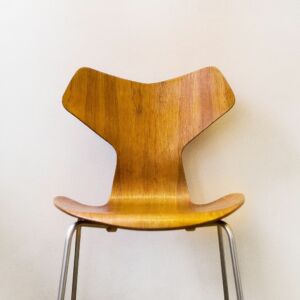News
Counterfeits increasing, but imitation is the sincerest form of flattery
This article is more than 10 years old.
Copies abound of Danish design abroad, but is it necessarily a bad thing?

An increasing number of Danes are returning from their holidays with a memento of their home country, not the one they have just visited.
New accessories based on designs by the likes of Arne Jacobsen and Finn Juhl, but purchased for a fraction of the original price, are finding their way into their luggage.
Proving its value
But contrary to the common belief that counterfeit products are seriously threatening the Danish design industry, Morten Grøn, the CEO of the advocate association Design Denmark, asserts that it is not necessarily a bad thing.
“I believe if something is copied, it proves it is good,” he told the Weekly Post.
“The market for Danish design would not be bigger without the copies. For example, the target group for ROLEX watches is not the same as the people who are buying the cheap copies in Thailand. The problem is much more complex than that.”
Design at a fast pace
In recent years interior design has developed like the fashion business. Designers release more lines than they used to, and this tends to mean there are fewer classical designs. These short-term trend pieces – like lamps, rugs and other small accessories – are the most prone to counterfeiting.
“The faster the consumption and the more trend-based a product is, the more likely it is to be counterfeited. Classical design pieces are not so likely to be reproduced because they keep their value over time,” explained Grøn.
This is reflected in the history of Danish design. In the early 20th century, furniture was not meant to be luxurious and expensive. It was developed to be sustainable and enduring, but at the same time aesthetic and affordable.
This is why there can be classical pieces of design found in almost every Danish household, and Grøn believes that Danes are willing to pay a price for a classical piece because it can last a lifetime.
Saving through educating
But the problem of cheap counterfeits remains an issue in the industry. The Danish Ministry Network against IPR Infringement reports that counterfeiting leads to lost revenues for the companies, a loss of jobs, and health hazards because of poor product standards.
Instead of more legislation, Grøn believes in educating people to stop the practice of counterfeiting.
“We at Danish Design do anything that we can to promote the idea of originality,” he said.
“Danish design is some kind of national heritage, and we need people to understand that something original also has its price because there is a large amount of work behind it.”
Changing trends worldwide
The good news is that the market of counterfeit products is not expected to grow in the future. As people – especially in China where two thirds of the counterfeits seen in the EU are produced – become wealthier, they focus more on real luxury and less on the fake products. That will also make them able to pay.










































